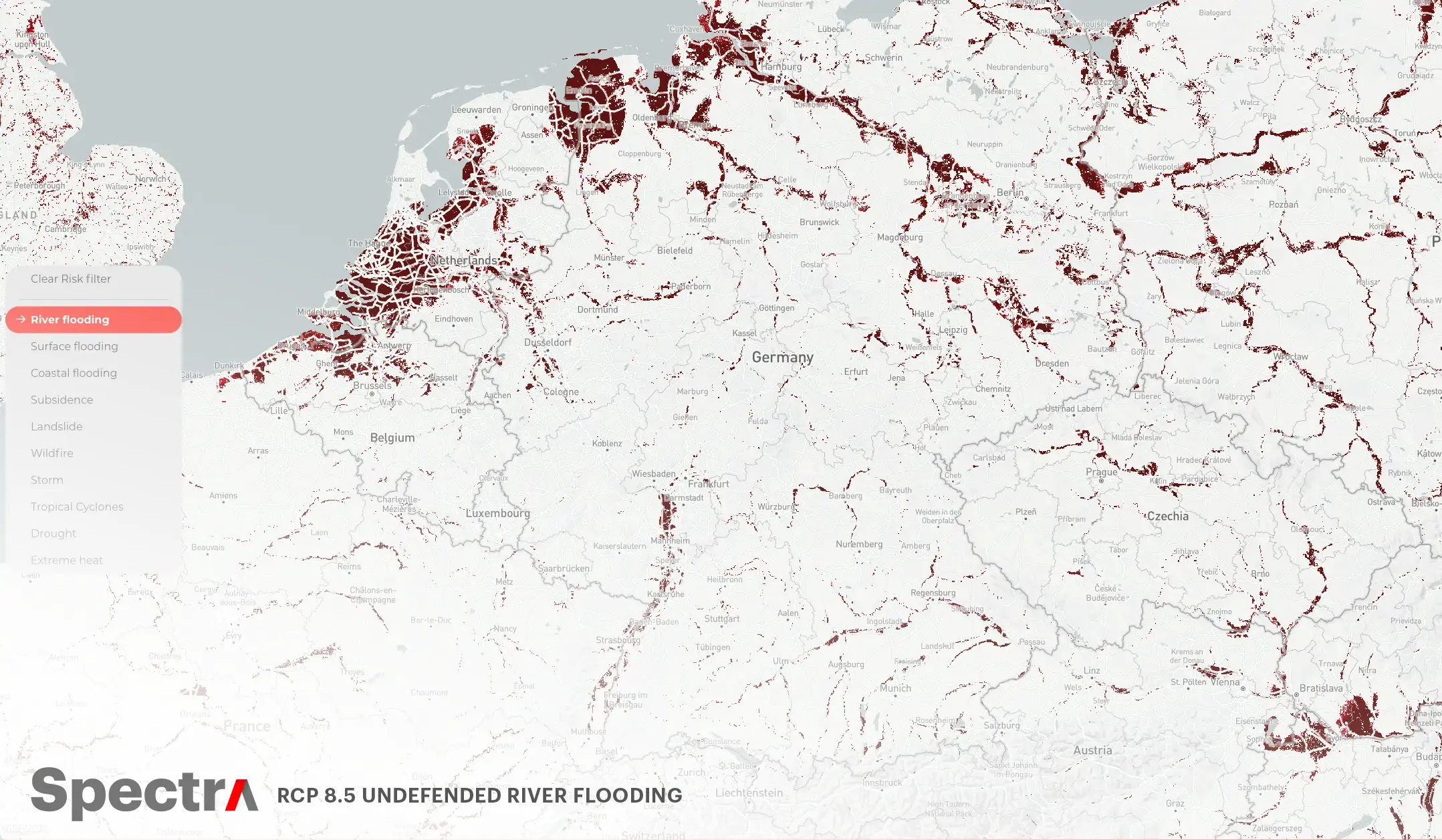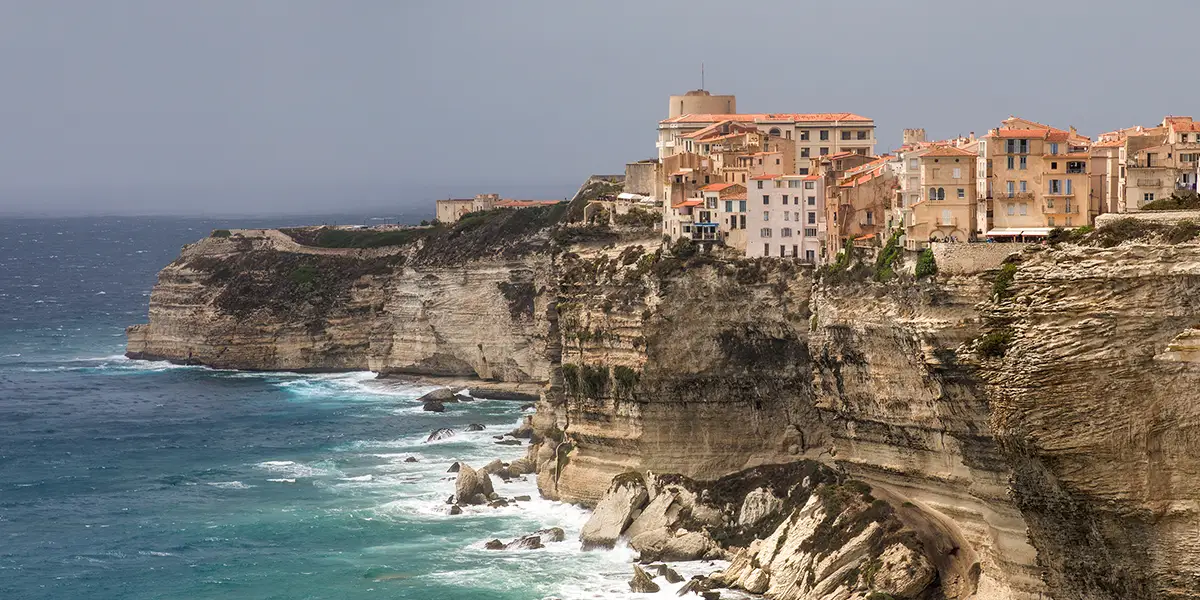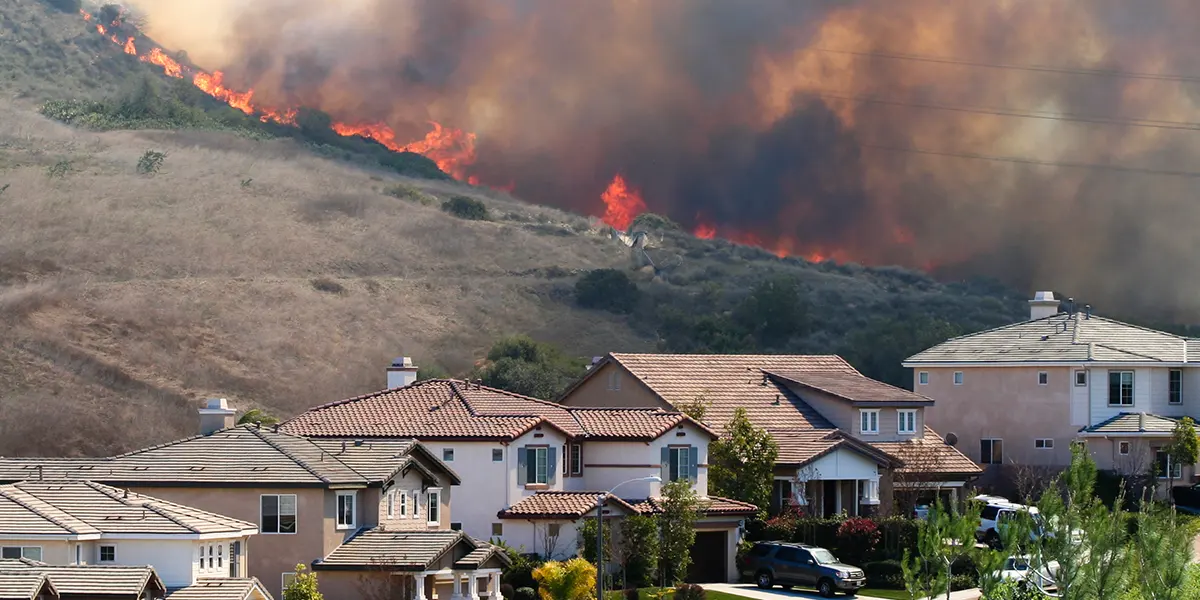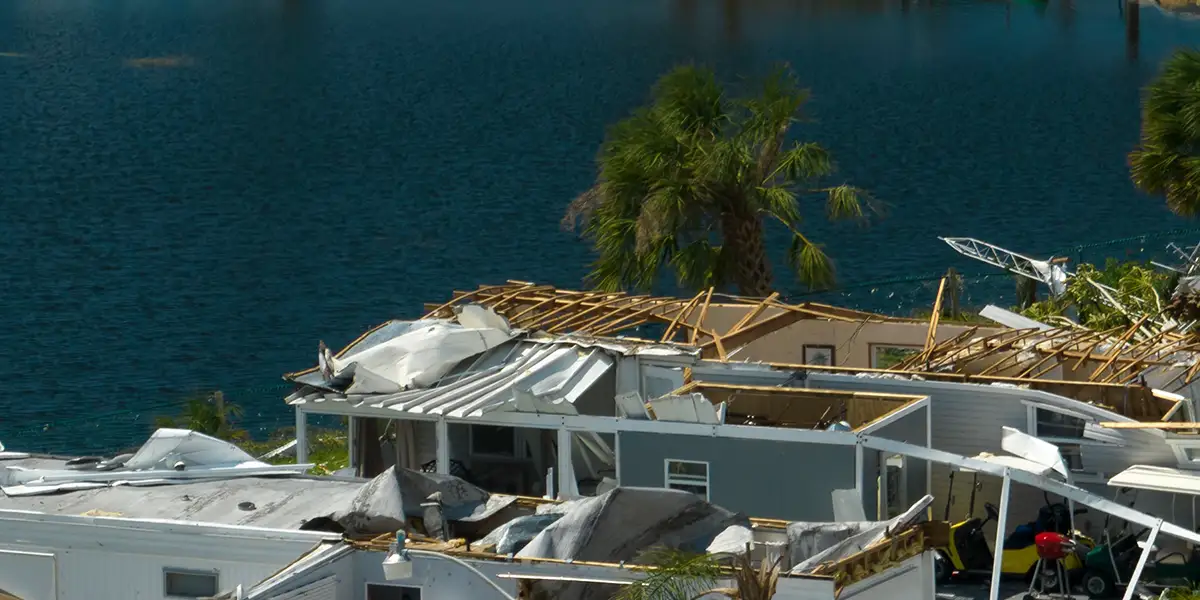Extreme flash flooding and intense precipitation wreaked havoc on parts of Belgium, Germany, the Netherlands, Luxembourg and France, making it the second-most costly natural disaster of 2021 caused by surging floodwaters that devastated river valleys in north-central Europe to carve up entire villages and left behind a path of widespread destruction and loss of life.
The floods originated from a slow-moving area of low pressure known as “Bernd” that traversed across central Europe.
As the system moved over western Europe, a northeasterly airflow brought warm and moist air from the Baltic Sea that moved into the low. At the same time, cold air moved from France towards Germany.
The interaction of these air masses triggered a condensation process. Compounded by above-average precipitation levels earlier in the month, the record-breaking volume of rain that fell on July 14th descended upon the already saturated ground, rapidly increasing river runoff and subsequent flooding.
While such a weather event was rare, its likelihood was 1.2 to 9 times more than it would have been over a century ago, with climate change playing a role. Various factors, including extreme rainfall, soil saturation, and steep and narrow valleys, contributed to a flash-flood character, causing a combination of pluvial and fluvial floods.
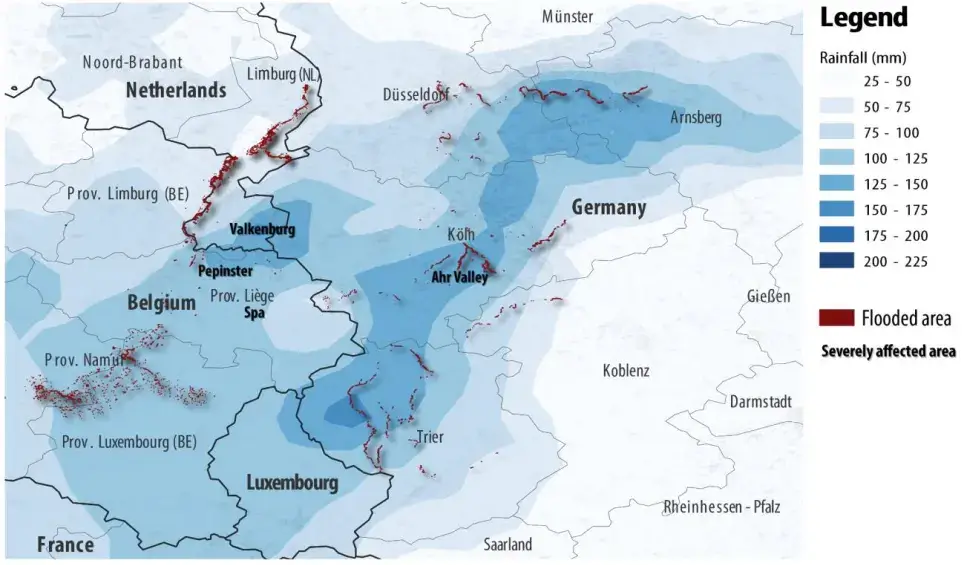
Multiple regions of Germany, including the western part of Rhineland-Palatinate (RLP) and the southern half of North Rhine-Westphalia (NRW), were severely impacted by flash floods on July 14th.
These localised floods happened without the involvement of more significant watercourses, as streams and rivers overflowed their banks across the affected areas. Consequently, considerable erosion and scouring of residential, commercial, and critical infrastructure occurred.
The consequences of the floods were widespread, affecting vital services such as hospitals and fire departments, while railways, bridges, and utility networks, including water and electricity supply, suffered extensive damage.
Martin Bertogg, Head of Catastrophe Perils at Swiss Re, emphasised the significance of flood risk and the need for comprehensive risk assessment, stating: "Floods affect nearly a third of the world's population, surpassing any other peril. In 2021 alone, we witnessed over 50 severe flood events worldwide. Given the scale of devastation, flood risk deserves the same attention and risk assessment rigour as primary perils such as hurricanes."
When it comes to natural disaster risks, the devastating floods in Germany’s Ahr Valley in 2021 were a wake-up call and a signal that climate change is already having consequences."
Claudia Hasse, Chief Executive at Munich Re for Germany, Cyber Europe & Latin America, explained.
It is important to note that the devastating floods exposed vulnerabilities in the flood forecasting, warning, and response systems (FFWRS) in certain regions, primarily the responsibility of Germany's national German Weather Service (DWD).
Despite early warnings issued by the DWD and other private weather service providers regarding heavy precipitation, the rapid rise of rivers compromised the effectiveness of early warning systems.
These systems could not anticipate the magnitude of the weather event, and automated early warning systems were either unavailable or malfunctioning, resulting in warnings not reaching many intended recipients. Consequently, the floods caught even prepared homeowners and companies off guard.
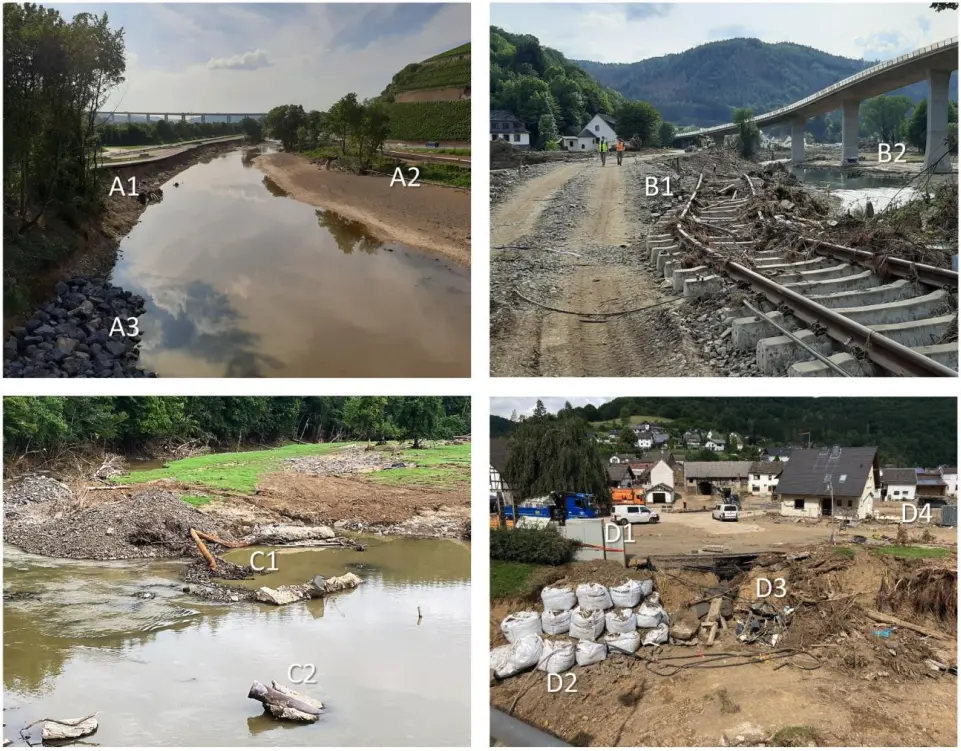
The Aftermath: Insurance
The 2021 floods in Europe were the most significant domestic flood event from a global insurance perspective and ranked among the costliest floods of recent decades.
However, only €11 billion out of the staggering record losses of €46 billion were covered by insurance, in contrast to the U.S., where natural disaster losses are typically insured.
This discrepancy highlights the insufficient preparedness of many businesses for such an event. Insurance companies recorded 213,000 claims related to the floods, including 40,000 damaged vehicles, 91,000 damaged residential buildings, and 28,000 companies reporting property damage and business interruptions.
Moreover, over 2,000 single-family homes with insured losses exceeding 100,000 euros remain in need of repair.
Despite these alarming figures, Germany's natural hazard insurance density, including flood insurance, has remained stagnant at approximately 50% for years.

Ernst Rauch, head of Munich Re's climate solutions unit, acknowledges that "People now realise they are living in risky areas, which they had not thought historically," adding that less than 50% of German property is insured against flooding.
"We expect the demand for flood insurance to increase in the medium term as a result of this event." Climate change's connection to increasingly costly disasters has forced insurance companies and reinsurers to reassess their risk assessments for vulnerable regions. However, the future poses additional concerns beyond the demand for insurance. With mounting losses, insurers may hesitate to provide coverage in the most affected parts of Europe.
Victoria Jewell, head of real estate at McLaren's, exclaims that "we have seen more restricted covers, especially for flood risks in Europe in local policies. And we have seen some flood exclusions too," highlighting that localised policies in Europe have seen more restricted covers and even flood exclusions.
To mitigate future flood risks in Europe, insurers have improved their measures to ensure losses are accounted for when such extreme floods occur again.
This includes actions from compiling handbooks of business standards and encompassing an extensive list of preparatory steps, including identifying nearby rivers, streams, or lakes, safeguarding below-ground premises, and relocating valuable equipment and machinery to higher floors to minimise potential damage.
In addition, regular inspections of roofs and drainage systems, as well as maintaining close communication with authorities monitoring rainfall and water levels, are also vital.
As climate change continues to amplify the impact of both river and coastal floods on Europe's insurance market in the short term, it becomes crucial to consider all flood risk types. Analysing pool data reveal higher loss ratios in regions more exposed to pluvial risks, underscoring the significance of including the pluvial flood component in risk assessment.
However, this necessitates high-quality granular data, which Climate X's Spectra analytical platform provides to insurance companies, enabling them to develop reliable and accurate forecasts for future climate-related risks.
The Aftermath: Commercial Real Estate
The devastating floods in Europe in 2021 caused widespread destruction, particularly impacting public property and real estate assets on an unprecedented scale.
In Germany alone, more than 10,000 buildings were destroyed.
The damage resulted from the rapid rise of water levels, which increased the flow velocity, obstructing bridges and other structures and the impact of large objects carried by floating debris.
The lack of awareness regarding climate risks has contributed to the construction of over 32,000 residential buildings in high-risk areas over the past 23 years. Germany's current legal restrictions for building in such zones are too weak, allowing continued construction in vulnerable areas.
Michael Szönyi, Flood Resilience Program Lead at Zurich, points out: "If we keep building hospitals with machinery worth €1 million in the basement in flood zones, it is not a surprise when we see multiple €1m losses in individual properties."
To address this issue in the real estate industry, authorities must proactively implement well-designed building regulations. In turn, this would promote the construction of "sponge cities" with reduced sealed areas, increased green spaces, and incorporation of parks and green roofs in flood-prone zones.
The Aftermath: Commercial Real Estate
Dr. Susanna Mohr, General Manager of the Center for Disaster Management and Risk Reduction Technology (CEDIM) at KIT, advises that flood risk management consider the landscape, infrastructure, buildings, river courses, and their changes and potential sediment transport when performing hazard assessments.
By discouraging the construction of residential and industrial properties in flood-exposed areas or mandating the use of flood mitigation technologies, authorities can significantly reduce the vulnerability of communities. However, it is essential to note that many at-risk properties were constructed before these regulations were in place. Therefore, the responsibility lies with the owners of such properties to take appropriate measures to protect against future disasters.
Understanding and quantifying the relationship between exposure and the vulnerability of commercial real estate is crucial for comprehending where the effects of climate change are already evident and where they will be most pronounced in the future.
The Aftermath: Energy
The flood event also resulted in substantial and costly destruction to the backbone of a society, critical infrastructure: in particular, electrical grids, water supply networks, bridges, rail lines and roads.
Notably, Gas supplies suffered considerable infrastructure damage, with approximately 133 km of natural gas pipelines, 8,500 gas meters, 3,400 house pressure regulators, 7,220 out of roughly 8,000 network connections, and 31 gas pressure regulating and measuring systems being destroyed or completely.
Moreover, during the peak of the incident, approximately 200,000 people in Germany experienced power outages, particularly in North Rhine-Westphalia and Rheinland-Pfalz, where the electricity infrastructure was severely impacted.
The extensive destruction and disruption caused by the flooding underscore the urgent need for developing adaptation measures at both the asset and system levels, aiming to ensure the resilience of infrastructure systems.
Achieving this goal necessitates increased collaboration among various sectors, including reliability and systems engineering, disaster risk modelling and management.
Never Again
The reality is that flood losses will continue to rise with climate change and urbanisation.
The events that unfolded in July 2021 revealed the substantial lack of preparedness to deal with extreme weather flooding. It exposed the extent of devastation that such events can cause, highlighting the urgent need for robust early warning systems to anticipate and prepare for such catastrophes.
To some degree, this inadequacy persists even two years later.
While Germany possesses sufficient expertise in managing regular floods, it faces challenges in foreseeing and preparing for rare and extreme flooding incidents. To effectively address future climate risks of this extreme nature, it is crucial to proactively prepare for climate risks, enabling stakeholders to take necessary measures to mitigate risks to critical infrastructure.
Ultimately, the success of flood disaster management hinges on the comprehensive reduction of all risk components - hazards, exposure, and vulnerability - through the implementation of early warning systems, preparedness initiatives, and preventive measures that include accurate climate data to help inform all decisions throughout the implementation process.
Sources
- Koks, E. E., van Ginkel, K. C. H., van Marle, M. J. E., and Lemnitzer, A.: Brief communication: Critical infrastructure impacts of the 2021 mid-July western European flood event, Nat. Hazards Earth Syst. Sci., 22, 3831–3838, https://doi.org/10.5194/nhess-22-3831-2022, 2022.
- Kreienkamp, F., Philip, S.Y., Tradowsky, J.S., Kew, S.F., Lorenz, P., Arrighi, J., Belleflamme, A., Bettmann, T., Caluwaerts, S., Chan, S.C. and Ciavarella, A., 2021. Rapid attribution of heavy rainfall events leading to the severe flooding in Western Europe during July 2021. World Weather Atribution.
- Kron, Wolfgang & Bell, Rainer & Thiebes, Benni & Thieken, Annegret. (2022). The July 2021 flood disaster in Germany.
- Thieken, A. H., Bubeck, P., Heidenreich, A., von Keyserlingk, J., Dillenardt, L., and Otto, A.: Performance of the flood warning system in Germany in July 2021 – insights from affected residents, Nat. Hazards Earth Syst. Sci., 23, 973–990, https://doi.org/10.5194/nhess-23-973-2023, 2023.
- Commercial Risk Online (2022) Flood risks grow in Europe. https://www.commercialriskonline.com/flood-risks-grow-in-europe/
- Financial Times (2022) A year after floods in Germany a quarter of insurance claims still open. https://www.ft.com/content/e6faddfa-4cdf-46cc-9672-05ff3a7c9be1
- MunichRe (2022) Extreme inflation and natural disasters call for disciplined risk management. https://www.munichre.com/en/company/media-relations/media-information-and-corporate-news/media-information/2022/media-release-2022-10-20.html
- PreventionWeb (2022) Climate change and land-use changes increase likelihood of flood events. https://www.preventionweb.net/news/climate-change-and-land-use-changes-increase-likelihood-flood-events
- Reinsurance News (2022) Floods drive high losses in 2021 as global insured nat cat bill hits $111bn: Swiss Re. https://www.reinsurancene.ws/floods-drive-high-losses-in-2021-as-global-insured-nat-cat-bill-hits-111bn-swiss-re/
- Reuters (2022) A year after floods in Germany a quarter of insurance claims still open. https://www.reuters.com/world/europe/year-after-floods-germany-quarter-insurance-claims-still-open-2022-07-06/
- Swiss Re (2022) Loss Analysis of Flood Event “Bernd”. https://www.swissre.com/dam/jcr:1667e781-ef51-4f3e-a7aa-2865005b0233/2022-10-sr-report-loss-analysis-flood-report-bernd.pdf

